Excerpted from The Plant-Based Journey: A Step-by-Step Guide for Transitioning to a Healthy Lifestyle and Achieving Your Ideal Weight* by Lani Muelrath (BenBella Books © Sept. 2015, reprinted by permission). See the pre-order promotion for this book, and enjoy bonuses! The workplace and travel both bring up the question of restaurant dining. Restaurant menus, it seems, are designed to thwart your best-laid plans for healthy eating. Oil, butter, and cheese are slammed into everything imaginable to increase food seduction, pushing you to keep eating. Is it any wonder Julia Child’s cookbooks are such big sellers? Put gobs of butter in anything and it will taste good. When it comes to restaurant menus, here are a few simple strategies for navigating the options.
How to Put a Restaurant Plate Together
Restaurants listed as vegetarian, vegan, or natural foods may be friendly houses of food for your journey—but then again, perhaps not. Vegetarian implies no meat products; vegan items are devoid of all animal products. “Vegetarian” and “vegan,” however, do not necessarily mean “healthy.” They don’t tell you anything about how the food is prepared, how much fat or sugar is added to the fare, or—in the case of vegetarian—even if dairy products or eggs are used. That doesn’t mean these restaurant venues aren’t workable; it just means that you will need to be specific about exactly what you want when ordering.
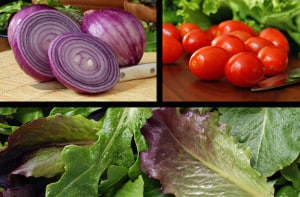 The best strategy is to do an internet search on the restaurant’s menu—and even make a phone call in advance to inquire about options. Detect which items on the menu might be most plant-eater friendly. Most restaurants have a dinner salad on the menu. When ordering your salad, clearly underscore what you do want: lettuce, tomatoes, carrots, cucumber—any and all raw vegetables.
The best strategy is to do an internet search on the restaurant’s menu—and even make a phone call in advance to inquire about options. Detect which items on the menu might be most plant-eater friendly. Most restaurants have a dinner salad on the menu. When ordering your salad, clearly underscore what you do want: lettuce, tomatoes, carrots, cucumber—any and all raw vegetables.
Next, politely be specific about what you do not want on your salad—cheese, eggs, bacon, meat chunks, anchovies—I’ve been surprised by every one of these on one occasion or another. Don’t be afraid to use the words “allergy” or “doctor” if it will help. Mention “no croutons” as well—they are usually fried in oil and often cheese saturated. Finally, ask for dressing on the side. You can also say “no dressing” and ask for a shaker of vinegar, which many restaurants serve with salads. You want the waiter or waitress to be your friend, and as you are asking them to go out of their way a bit for you, being gracious is a smart move.
More and more often, veggie burgers are being featured as sandwich or entrée menu choices. Ask that yours be baked and not fried, and ask for ketchup and mustard instead of mayo or butter on the bun. If there is a vegetarian sandwich listed, simply ask that yours be served without mayo, cheese, or butter. If not, you can probably order a custom sandwich.
In addition to salads and veggie burgers, your best restaurant bet might be in the sides section of the menu, where you will often find baked potatoes and other vegetables. If you don’t see it listed, ask about the vegetable of the day, often served with the restaurant entrées as part of the main menu—frequently asparagus, green beans, or broccoli.
You can ask that your serving be steamed and prepared without frying or oily dressing. If you say “low fat,” all bets are off as to how butter-drenched your plate will arrive, so be specific. Fruit salads are usually either in the sides or listed somewhere else on the menu; clarify to serve without yogurt or cheese. Breakfast is usually easy because oatmeal is almost always on the menu. I’ve started to have increasing good luck with asking for soy milk or almond milk on the side, too.
Our recent stop at a Mexican eatery is an example of getting good choices at restaurants. On the face of it, the menu looked like a dietary disaster. But I know I can pull together something pretty good at most Mexican restaurants—as long as they have a batch of beans cooked sans lard. I had phoned ahead about the beans, so I knew that they had two pots of beans in the kitchen: one of them plain boiled pintos.
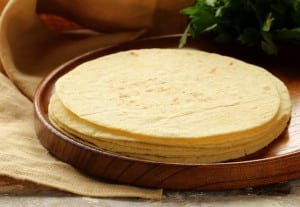 When we arrived, I knew exactly what to do. I ordered a big bowl of the boiled beans, a stack of soft, fresh corn tortillas, garden salad without dressing, extra bowls of salsa (for dressing and for my tacos), and some lime or lemon wedges. When it all arrived, I created multiple tacos by piling the beans, greens, and chunky house salsa on the corn tortillas. Combined with the greens and tomato on the salad, I crafted a hearty lunch. If the only in-house beans had been cooked in a pot of lard, I would have simply passed on beans in my tacos and done just fine with the fresh corn tortillas, tomatoes, green salad, and house salsa.
When we arrived, I knew exactly what to do. I ordered a big bowl of the boiled beans, a stack of soft, fresh corn tortillas, garden salad without dressing, extra bowls of salsa (for dressing and for my tacos), and some lime or lemon wedges. When it all arrived, I created multiple tacos by piling the beans, greens, and chunky house salsa on the corn tortillas. Combined with the greens and tomato on the salad, I crafted a hearty lunch. If the only in-house beans had been cooked in a pot of lard, I would have simply passed on beans in my tacos and done just fine with the fresh corn tortillas, tomatoes, green salad, and house salsa.
Big Chain Bites
When it comes to the fast-food chains, a little creativity can get you some eats in a pinch. The problem is all the mystery ingredients. Careful scrutiny usually uncovers dairy products, eggs, or oils on the lists of what, on the face of it, may appear to be plant-friendly fare—such as beans and veggie burgers. Ingredients seem to also be in a constant state of flux. You can’t always trust that the servers are in the know when it comes to ingredients, so it’s worth checking with management or headquarters online if you want to get the facts.
The best resource I have found on fast-food restaurant menus is listed at Urban Tastebuds, which has ferreted out and listed “Forty-Eight Vegan Chain Restaurant Menus”—the closest thing to plant-based currently available. See the list at www.urbantastebuds.com/43-vegan-chain-restaurant-menus -every-vegan-needs-know. The list starts with Atlanta Bread Company and runs all the way through Wendy’s. Each listing is linked to a page elaborating upon which items can be ordered without animal products. Keep in mind that it doesn’t add the processed food filter, so items may include oils and other processed products. Fast-food meals are best left as last-resort options. Still, it’s nice to know where you might be able to find emergency fare.
Planes, Trains, and Automobiles
What about the challenges posed by airplane and other long-distance travel? The tips regarding workplace readiness may be all you need. Yet travel involving greater distances and extended chunks of time presents its own set of challenges. This year my husband and I took five trips involving international travel. Add to that the dozen or so excursions made in country for speaking engagements, and we’re talking about lots of hours logged on planes, in airports, and even a boat or two. The same pack-and-plan system works for all of them.
Scout the Location in Advance
The first thing I do for airplane travel is some reconnaissance regarding food options at the destination. First stop is the internet, where I’ll search the hotel or rental location for nearby plant-food-friendly options, such as a produce market, a natural foods store, or a familiar chain—places where I’ve found a good meal in the past, and where I know I can replenish my travel food stash. I then search the area for restaurants under the categories of vegetarian, vegan, or natural foods. A search at www.happycow.net can often turn up several appropriate vendors for eats in urban areas.
Outbound
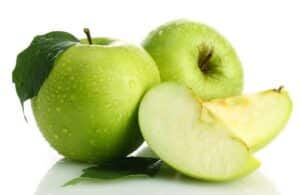 It’s easy to prepare and pack food when you are heading out on plane travel. Here’s an example of how I do it. With an international junket coming up in a few days from this writing—in addition to the in-transit needs of spare clothing and a toothbrush—I’ll pack in my carry-on the following: four hummus sandwiches, two peanut butter sandwiches, four apples, cold baked potatoes, peeled carrots, sugar snap peas, and a couple of baggies of rolled oats along with some dried fruit, nuts, and seeds. All of these easily pass at airline security—I’ve never had a question asked yet.
It’s easy to prepare and pack food when you are heading out on plane travel. Here’s an example of how I do it. With an international junket coming up in a few days from this writing—in addition to the in-transit needs of spare clothing and a toothbrush—I’ll pack in my carry-on the following: four hummus sandwiches, two peanut butter sandwiches, four apples, cold baked potatoes, peeled carrots, sugar snap peas, and a couple of baggies of rolled oats along with some dried fruit, nuts, and seeds. All of these easily pass at airline security—I’ve never had a question asked yet.
This food cache translates to two substantial meals for both my husband and me. The hummus sandwiches are eaten first due to their perishable nature. The carrots and snap peas will serve as filling and fibrous portable fare—instant salad, just not in the usual bowl. The peanut butter sandwiches pass the durability test and I’ve served them good as new— though slightly reshaped depending on the rigors of travel—up to forty-eight hours later. The apples last indefinitely. So do the nuts and seeds.
Potatoes are best eaten within a few hours, depending on the heat to which your luggage is exposed, but I’m always impressed by the way these hold up. The rolled oats can be emptied into a cup, covered with water, and after a few minutes of soaking, ready to eat. If your fruit stockpile has run out, you can find apples, bananas, and other fruit at most airports, even in the coffee shops. Another option for carry-on is soups-in-a-cup that simply require hot water. Let them sit, and in five minutes you can have split pea or black bean soup.
Inbound
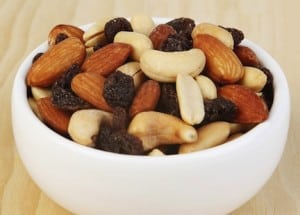 Returning from a destination creates a slightly different situation because you don’t have the luxury of being able to stock up from home. If you’ve been staying with friends or family, a house rental, or a hotel with a fridge, you can pack fruit and durable sandwiches for the return trip. Rolled oats, dried fruit, and nuts packed as part of your outbound preparations can hitch up with airport salads and fruit for sustenance.
Returning from a destination creates a slightly different situation because you don’t have the luxury of being able to stock up from home. If you’ve been staying with friends or family, a house rental, or a hotel with a fridge, you can pack fruit and durable sandwiches for the return trip. Rolled oats, dried fruit, and nuts packed as part of your outbound preparations can hitch up with airport salads and fruit for sustenance.
*This post contains affiliate links. If the product is purchased by linking through this review, VegKitchen receives a modest commission, which helps maintain our site and helps it to continue growing!


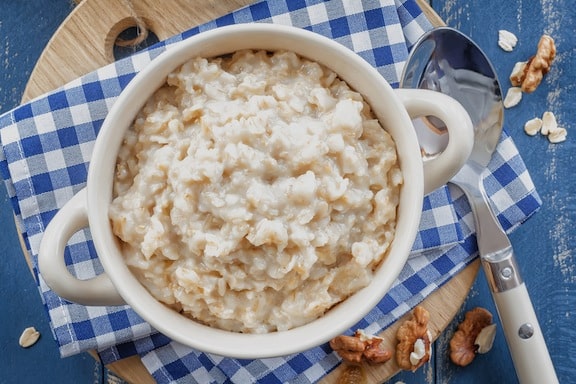

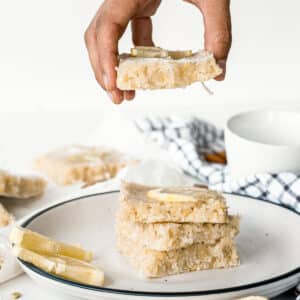


dimo says
OK, as a person with an ACTUAL food allergy (I will DIE if I eat even the tiniest piece of a mushroom), I beg you all: DO. NOT. use "I have an allergy" as a fallback to ensure a vegan dish. All that does is make a LOT of extra work or the kitchen staff. A food ALLERGY (as opposed to a mere intolerance) will kill a person. so, if someone says they have an allergy, the staff BY LAW must do a radical wipe down of the kitchen equipment (usually with bleach solution) and take painstaking measures to prevent cross-contamination. this will NOT make them happy in the slightest, and when they find out that your "allergy" is just your PERSONAL choice, it will make it that much harder or the next vegan or vegetarian to patronize that restaurant.